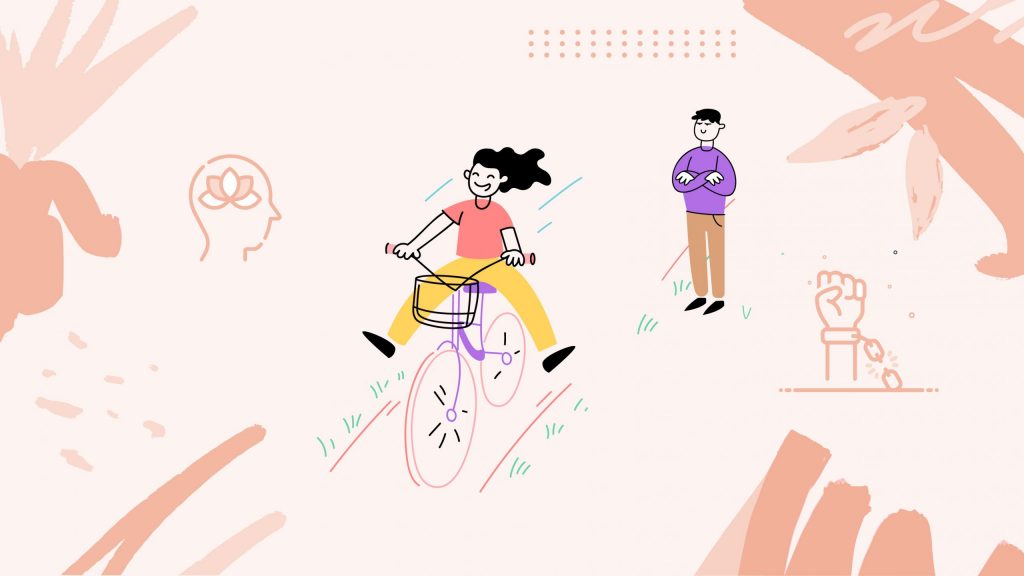Signs of Avoidant Attachment
In the rich tapestry of human relationships, engaging with someone who embodies a dismissive-avoidant attachment style can be akin to reaching for a reflection in water—seemingly there, yet untouchable. These individuals often appear as islands of independence, floating serenely in a sea of social interconnectedness. They wear their autonomy like a badge of honor, seemingly unaffected by the deep currents of emotional intimacy that draw others together.
The true challenge in connecting with dismissive-avoidant individuals isn’t just their adeptness at sidestepping closeness; it’s the silent undertow of isolation that swirls beneath their calm surface. Outwardly, they project an air of not needing anyone, a fortress of self-reliance. Yet, this façade often masks a deeper, more turbulent sea of unacknowledged emotional needs and a hidden desire for the very connection they outwardly shun.
This paradox creates a complex dance of push and pull. The more they retreat into their solitude, the more they unwittingly amplify their own need for intimacy, setting a cycle in motion that can leave both themselves and their loved ones feeling adrift. Understanding this dynamic is crucial for navigating the choppy waters of relationships with those who, beneath their veneer of detachment, might just be silently signaling for a lifeline.
What Causes Avoidant Attachment
When we explore the minds of individuals with a dismissive-avoidant attachment style, we find ourselves in a landscape shaped by the intricate workings of the brain’s emotional circuitry. Imagine the brain as a complex control center, where signals are constantly sent and received to help us navigate relationships. In those with dismissive-avoidant tendencies, this system operates a bit differently, often due to early experiences that have recalibrated their emotional responses toward self-sufficiency and independence.
Central to this phenomenon is the amygdala, a small but crucial component of the brain responsible for detecting and responding to threats. For dismissive-avoidant individuals, this neural watchdog is particularly sensitive to emotional proximity, perceiving it as a potential threat. The amygdala reacts defensively, triggering a cascade of stress hormones that essentially flash a neural ‘Do Not Disturb’ sign, urging them to maintain distance for safety.
Moreover, the oxytocin system—which plays a key role in bonding and emotional connectivity—might be less active in these individuals. This reduction can dampen the pleasurable feelings usually associated with close personal interactions, replacing what should be a warm emotional embrace with a cooler, more distant interaction.
By understanding these neural underpinnings, we can appreciate that the emotional detachment exhibited by dismissive-avoidant individuals isn’t merely a behavioral choice but a deeply ingrained survival mechanism, sculpted by both their biology and their experiences. This insight not only deepens our understanding of such attachment styles but also highlights the profound impact of neurological processes on interpersonal behaviors.
Subscribe to newsletter
Get your Gut Health Starter Guide right now.
Elevate your Tuesdays with practical, science-backed wisdom propelling you forward on your gut health journey.

How to Stop Being Avoidant
If you’re grappling with a dismissive-avoidant attachment style, it’s like rewiring your emotional responses to see connections as comforting rather than causes for alarm. Here’s how you can gently guide your brain towards a new perspective on intimacy:
- Identify and Express Emotions: Start by getting comfortable with recognizing and naming your emotions. It could be as simple as saying, “I’m feeling anxious about this meeting” or “I’m happy we had this conversation.” Use a journal or talk with a therapist to practice this in a safe space.
- Mindfulness Practices: Incorporate mindfulness into your daily routine to stay present and less reactive. Activities like breathing exercises, mindful walking, or meditation can help you observe your emotions without judgment, reducing the intensity of your instinctive pullback from closeness.
- Therapeutic Engagement: Engage in therapies that challenge your thought patterns around relationships. Cognitive-behavioral therapy (CBT) is particularly effective as it helps you identify and reframe the negative beliefs that reinforce your avoidant behaviors.
- Incremental Exposure to Intimacy: Begin to slowly introduce elements of emotional closeness into your interactions. This might involve participating in trust-building exercises in a therapy group or setting small, manageable goals for opening up to friends or partners.
- Reflective Practices: Regularly reflect on your interactions and how they made you feel. This could involve discussing your experiences with a therapist or mentor who can provide feedback and support.
A Testimonial of Transformation
Meet Tom, a 37-year-old software developer who once thrived in his bubble of self-imposed solitude. “I used to think being alone meant being strong,” Tom confesses. His perception began to shift dramatically following a difficult breakup that led him to seek professional help, where he discovered his aloof nature was more about protection than preference.
“In therapy, I unraveled that my love for solitude was actually a shield I’d developed over years,” Tom shares. This shield, he learned, was born out of a dismissive-avoidant attachment style, a way of interacting with the world that was deeply rooted in his early experiences. It was a revelation that what he considered independence was, in fact, a defense strategy against emotional pain.
Guided by his therapist, Tom began the delicate process of dismantling these defenses. “It began with small confessions to friends about my everyday experiences and gradually, I worked up to expressing deeper emotions and insecurities,” he describes. This practice of openness slowly permeated his romantic relationships, where he made conscious efforts to be more present and vulnerable.
Tom’s transformation has been profound and multifaceted. “Learning to embrace vulnerability has opened a new chapter of my life,” he reflects. “It’s not just about romantic relationships; it’s about feeling more connected in every aspect of my life. I now engage with friends, family, and colleagues on a level I never thought possible.”
Today, Tom views his journey not as a loss of independence, but as a gain in genuine strength and connection. “Letting people in has not only reduced my stress but has made me feel part of a community. I feel stronger, not despite my vulnerability, but because of it.” His story is a testament to the transformative power of understanding and reshaping one’s attachment style, demonstrating that true strength often comes from the courage to connect.


















